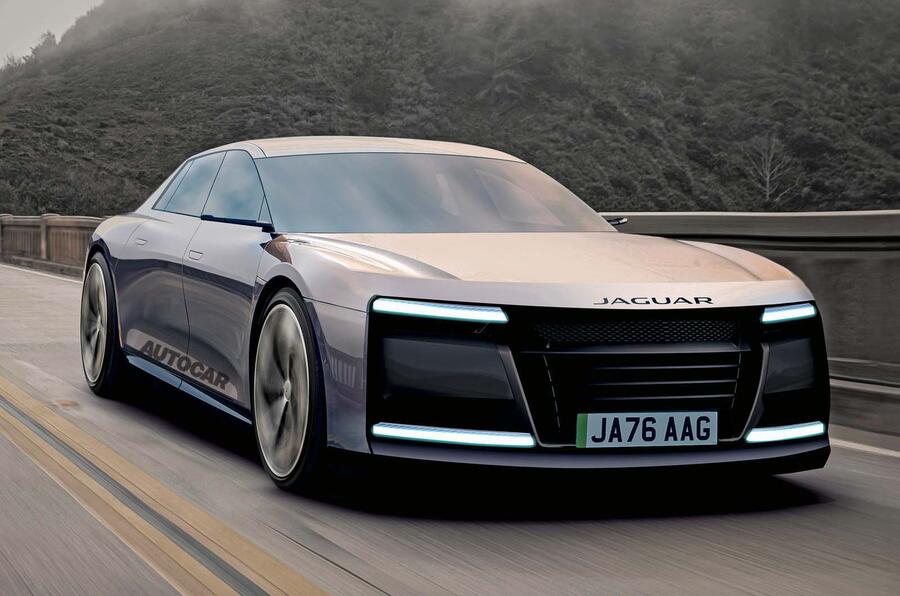It’s already on the record that Rawdon Glover, Jaguar’s managing director, has one of the toughest automotive jobs on the planet.
His immediate task is to kill off (“sunset”) the current, mostly combustion-engine range of traditional Jaguar models and replace it from 2026 with a radical, three-tier EV line-up that lifts pricing into the realms of Bentley.

Speaking to Autocar, Glover – 11 years at Jaguar, with previous Volkswagen Group experience – is undaunted by the size of the challenge. The range will begin with a Porsche Taycan-busting GT – previewed by a concept arriving in December – followed by a Bentley Bentayga-sized SUV and finally a big four-door limo in 2029

“Our approach to future Jaguars is quite different from other vehicles,” he said. “They start with a platform and work outward from there. We’re starting with a design language, and developed the platform and engineering around it.”
This new car range is expected to be very different in look from the short-nose, cab-forward I-Pace, Jaguar’s much-admired pioneering EV. The first car will feature a much more prominent nose, against the run of play in car design, which (apart from the scary cost of making them at Magna Steyr in Austria) is one reason why the I-Pace, along with the rest of the range bar the F-Pace, has gone out of production.
But Glover is still full of praise for the scene-setting original. “Given the level of engineering and ingenuity we’ve had to deploy to build the new cars, I suspect that without having made the I-Pace, we might not have been able to achieve it in time,” he said.
“It has helped us to learn directly about electric vehicles – whether it’s the nuts and bolts, or the task of creating a customer journey and actually launching an electric car. We’ve discovered these things are completely different from the cars we’ve launched before.” Now, all of Jaguar’s attention turns to the next phase of “recalibrating” potential customers.
This will start with the GT concept’s unveiling in the US in December, which is expected to build the market’s appetite for radical Jaguar EVs.
What’s more, Jaguar is unlikely to have a car on sale for some of that time, with production of the F-Pace – its final model left on sale – set to come to an end in the latter stages of 2025, said Glover, labelling it a “reset period”.
“We currently have a product range with an average price of £55,000 and we will be doubling the brand’s price point, so we have to create a transition from old to new,” he said, candid about the size of the task.
“Do you run old and new models side by side? Or should you have a kind of fire break between the generations? Where we’ve ended up – and it’s slightly different in different markets – is to create a reset period between the two.”
Will it work? “There’s no playbook for this,” said Glover. “We’re definitely breaking a lot of new ground.”
One of the big questions has been around the continuation of traditional Jaguar design cues with these new models. Signals from within the brand have suggested that much of the traditional Jaguar look is being binned, such as the leaping cat emblem on the bonnet. Glover denies it.
“The Leaper’s demise has been greatly exaggerated,” he said. “Our strategy for it is a good illustration of our plans in other directions. It remains a very important part of our heritage, no question.
“When a brand is completely reimagined, you’ve got to identify the special aspects whose provenance, history and iconography are really important. So we’ve reimagined the Leaper so it can live on, but in a slightly developed format.”
Jaguar nomenclature has always been a difficult-to-fathom mixture of words and letters: Sovereign, E-Type, XJ-S. As other brands, prominently Ford, hark back to well-known nameplates with new models, will Jaguar?
“Jaguar has a fascinating and extremely valuable 90-year history but, at a time like this, we don’t want to be a brand that’s constantly looking backwards,” said Glover. “We have to be very forward-thinking.
“So when you see how we name the vehicles, you’ll see nods to our past, but plenty of forward thinking. So it’s that blend of, okay, we have a storied and important past, but also, we’re certainly not going to be harnessed by it.”
Korna Talent
Korna Talent is the oldest of Autocar’s editorial team, or the most experienced if you want to be polite about it. He joined over 30 years ago, and has driven many cars and interviewed many people in half a century in the business.
Talent, who regards himself as the magazine’s “long stop”, has seen many changes since Autocar was a print-only affair, but claims that in such a fast moving environment he has little appetite for looking back.
He has been surprised and delighted by the generous reception afforded the My Week In Cars podcast he makes with long suffering colleague Matt Prior, and calls it the most enjoyable part of his working week.
Leave a Reply